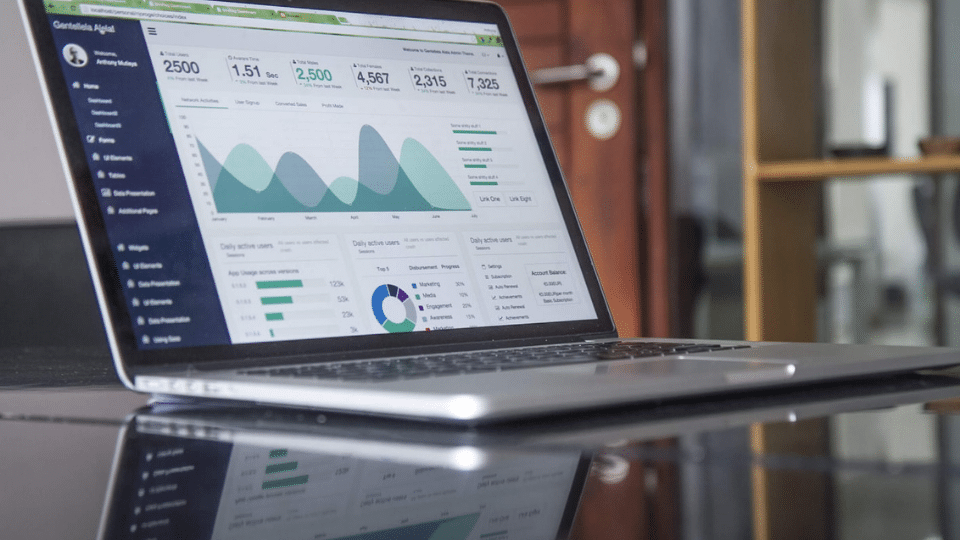
Do you own an online business or other digital asset like SaaS, App, Shopify store, content blog, or ecommerce store?
With a new buyer joining our Flippa platform every minute, now might be the time to sell your digital asset.
If you’re thinking of selling your online business but not sure where to start, this seller onboarding guide will help you get on your way! It’s easy, fast, and intuitive.
With Flippa, you can:
- get an accurate valuation of your online business or digital asset
- list a business for sale using a step-by-step template
- get matched and connected with thousands of qualified buyers who are specifically interested in your asset type
- discuss, negotiate, and agree on sale terms; perform due diligence and
- get paid.
The first step is to find out the value of your digital asset or online business by using Flippa’s Intelligent Valuations Engine. It’s free, easy, and quick. The valuation will give an accurate sense of the value of your business and give you an idea of an appropriate asking price.
How do we know? Flippa’s valuation engine is backed by the largest data bank of sales data from over ten years of transactions. It’s like an encyclopedia for digital assets — any kind of digital asset and online business. This data is called on and cross referenced with the information you supply about your business to provide the world’s most accurate valuation — an indication of what the buying community will pay.
Start by answering a few questions about your business such as business type and revenue model, your URL, date you started your business, the number of hours a week you spend to run your business, annual revenue, annual expenses, and any other information that is relevant to your business such as traffic, repeat business, and social media.
Valuation in hand, you’ll be inspired and motivated to list it!
Creating a listing is as easy as getting a valuation. In fact, you already started the process with the valuation step. You need just a little more detail.
First, establish a Flippa Account register as a seller. This enables you to not only list, but keep track of the listing activity, communicate with buyers on the platform, update your listing information, and compete the transaction.
Flippa is committed to safe and successful transactions on its marketplace. So we ask all registered buyers and sellers to verify their ID. This can be done when you create a listing and select “My Profile” where a link steps you through the process. If you verify your ID at the time of listing, you must at the time of sale in the Sales Completion area.
Information Required To List
To create a listing for your online asset or business, you will need to:
1. Provide preliminary details
Provide information on the nature of your online asset or business, your business URL, your business name, your registration date and location.
2. State your online asset or business type
Be it ecommerce, SaaS, Services, Marketplace, or Advertising. Depending on your selection, you will also need to nominate one or more sub-categories. For example, in the case of ecommerce, Dropship, Shopify, Digital Products, and/or Inventory Holding.
3. State the industry you operate in
Be it Electronics, Automotive, Business, Design & Style, Education, Entertainment, Food & Drink, General Knowledge, Health & Beauty, Hobbies & Games, Home & Garden, Internet, Lifestyle, Sports & Outdoors or Travel. This is important as it will impact how your listing appears in search results and marketing materials.
4. State your monetization methods
When selling your online business, buyers will want to clearly understand how the business makes money. It’s crucial to highlight the businesses monetization methods, and the more divers your revenue streams, the more attractive your business will be to potential buyers. Ways in which your business may make money include:
Advertising Revenue: The business generates income through various advertising channels such as display ads, sponsored content, or affiliate marketing partnerships. A robust ad strategy and a substantial audience base contribute to steady revenue streams.
Subscription Model: Leveraging a subscription-based model, the business offers premium content, services, or products on a recurring payment basis. This model ensures predictable revenue and encourages customer retention.
E-commerce Sales: The online business sells physical or digital products directly to consumers through its e-commerce platform. A diverse product range, efficient logistics, and a seamless purchasing experience enhance revenue generation.
Freemium Model: By offering basic services for free and charging for premium features or upgrades, the business attracts a wide user base while monetizing through upselling premium offerings. This is most common in SaaS businesses.
Sponsorships and Partnerships: Collaborating with relevant brands or companies for sponsored content, partnerships, or co-branded initiatives can be a lucrative revenue stream, particularly if the business has a strong niche presence.
Lead Generation: Monetizing through lead generation involves capturing and selling qualified leads to other businesses within the industry. High-quality leads and effective lead nurturing strategies are essential for success in this model.
Affiliate Marketing: The business earns commissions by promoting third-party products or services through affiliate links. Strategic partnerships, targeted marketing campaigns, and transparent disclosure of affiliate relationships are key to maximizing earnings.
Licensing and Intellectual Property: If the business owns proprietary technology, software, or content, licensing agreements with other businesses or individuals can generate passive income through royalties or usage fees.
By highlighting these monetization methods, potential buyers gain insight into the diverse revenue streams and growth opportunities offered by the online business, enhancing its attractiveness and value in the marketplace.
5. Connect your Google Analytics account to show your site traffic
Why? Listings with Google Analytics connected receive 2.8x more views and 2.4x more watchers. Skip this step if you do not use Google Analytics.
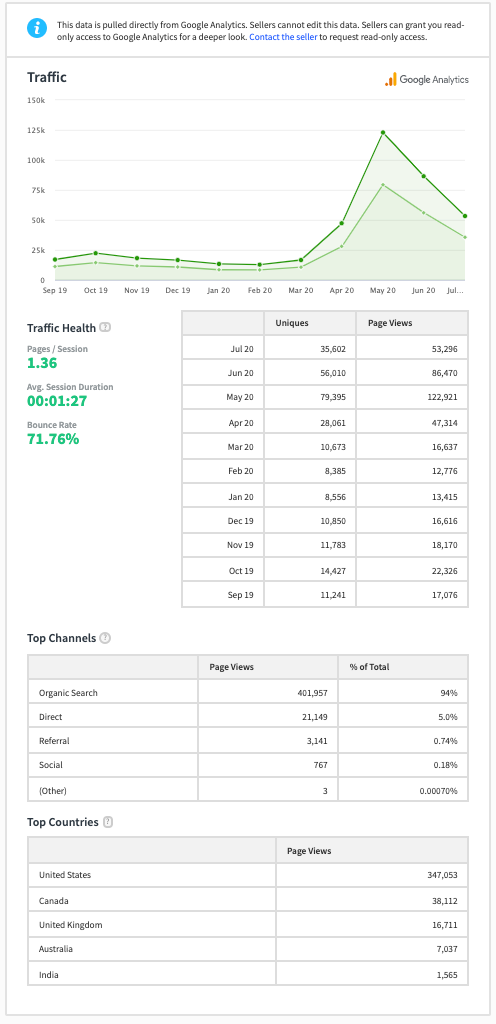
6. Input revenue and expenses
Must be on a month-by-month basis for the most recent 12 month period. Using this information, Flippa will calculate your average net profit per month.
Also connecting any cloud accounting software you use for your business will give buyers a verified and clear idea of the profitability of your business. This may include Stripe, Xero or QuickBooks.
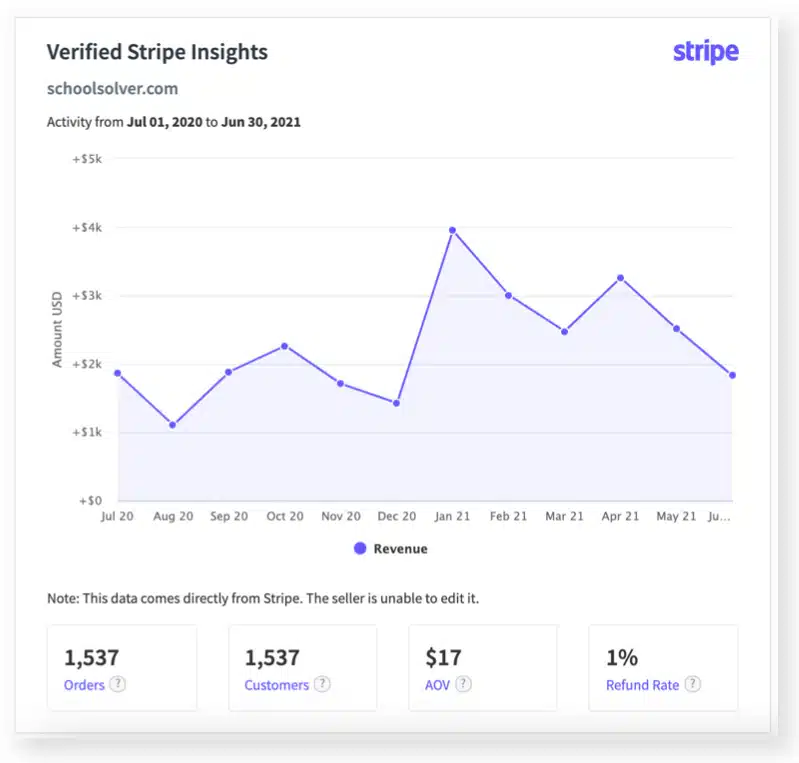
7. Attach a profit and loss (P&L)
Your P&L must detail the source of your revenue and expenses for the most recent 12 months. Or simply connect one of the cloud accountig software integrations Flippa offers – Stripe, Xero or QuickBooks.
8. Attach evidence of revenue to support the claims made in your P&L statement.
An example might be an extract from your Ecommerce dashboard. You can also connect a number of these platforms through Flippa’s network of integrations including Shopify, PayPal, WooCommerce, BigCommerce, eBay, Square, Magento, Shopee and Lazada.
9. Enter a tagline of 120 characters which describes your online asset or business.
We recommend using keywords which buyers are likely to search and avoid using exclamation marks, all caps or acronyms
10. Enter a description of your online asset or business.
To attract and engage buyers, be accurate, honest and spell out your unique selling proposition and key selling points. What does your online asset or business do? How does it make money? What is your fulfilment process? How do you source inventory? Will you provide post-sale support?
A great description of your business will be clear and concise, outlining what your business does, how it makes money and what the day-to-day operations consist of.
To get your started, here a few heading you can use:
- About the business: high level summary of what the business does, who started it, how it makes money and who the competitors are. Think of this as the executive summary.
- Business model: how does your business make money, do you have ongoing contracts with existing clients or suppliers, what are your revenue streams.
- Key metrics: list the top five to 10 metrics a buyers should be aware of when assessing your business. These should be the best performing metrics for the business.
- Operations: list the day-to-day operations of the business, what distribution looks like, the number of employees, the number of hours you spend on the business each week, and any ongoing software development requirements.
- Customers: where are your customers bases, are they repeat customers or one-time purchasers, and are there opportunities to easily grow the customer base?
- Financials: clearly describe if the business is stable, growing or declining in revenue and profit, and what time frame is this over, list your net profit and any ongoing contracts you have with clients.
- Growth opportunities: share any insight you have to potential growth opportunities and what skills a potential buyer might need to capitalize on these opportunities.
- Reason for selling: this is key to helping a buyer understand your motivations for selling, as well as where their skill set may be able to take the business to the next level.
11. Attach a photograph of your site, product, or service (min 550px x 300px).
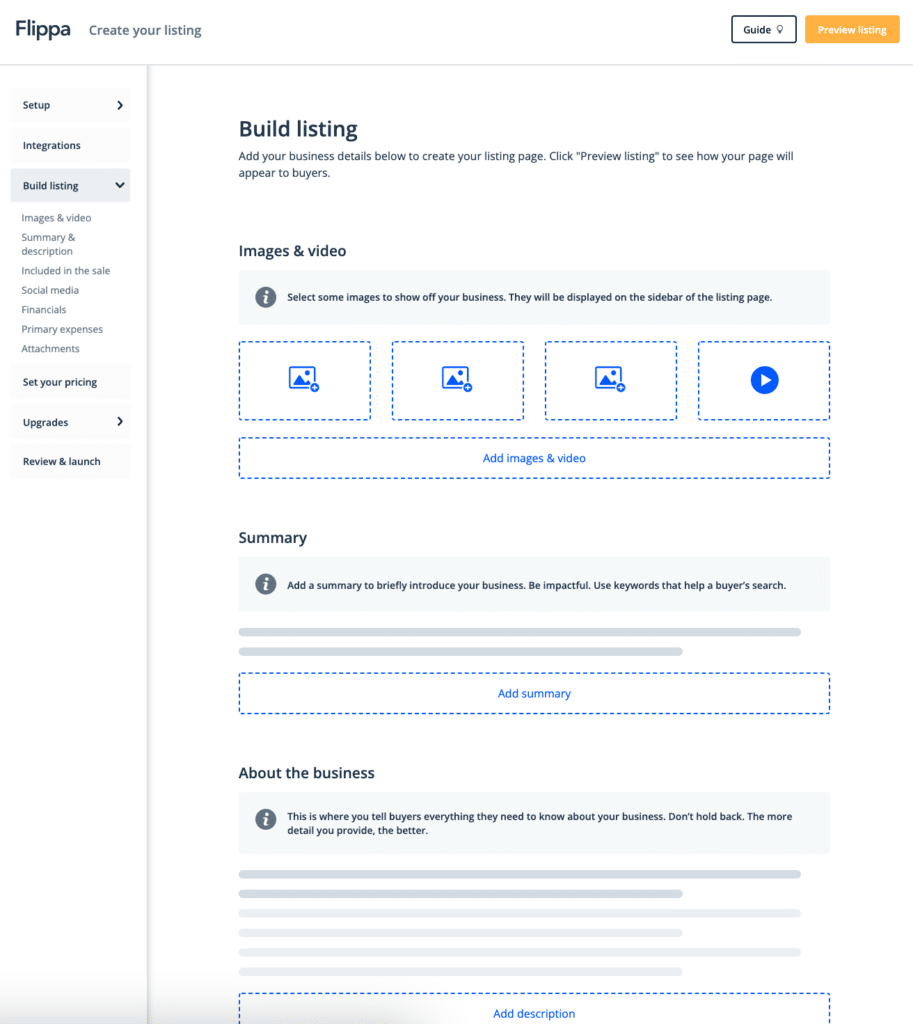
12. Provide any other key ancillary details
For example, the size of your social media following, inventory held (if any/relevant) and assets to be included in the sale.
13. Choose between auction and fixed-price listing
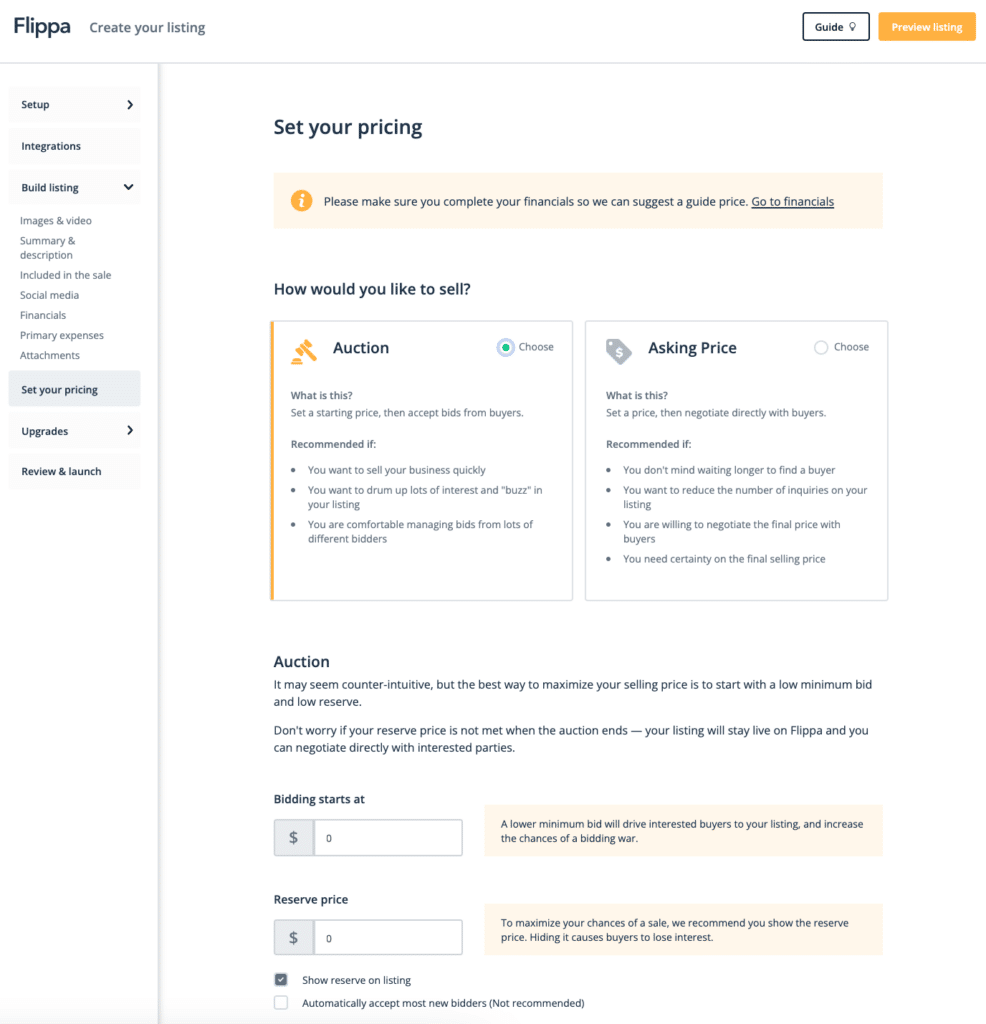
There are two ways to sell on Flippa: auction and fixed-price listing. The method that is best for you will depend on several factors including your asset type, unique personal circumstances, and your target buyer.
Set a price which is fair to you, and a potential buyer. If you haven’t already, use Flippa Valuations to get a good idea. If you’re unsure about pricing, you may be better off with an auction-style listing
Fixed price, or classified listing, is a method of sale where a business is listed with a set price or guide that is open to negotiation. It’s most suitable for a business with a value over $100,000.
- Classified listings are open to offers and visible in search indefinitely until your listing sells.
- If you would like to change the price, add Google Analytics, or
- convert it to an auction instead you can do it through your liting settings.
- Please contact us if you would like to cancel your listing.
An auction a great way to generate immediate buyer interest and generate a high price relatively quickly due to the sense of urgency and limited tome to offer the business. Auctions run for 30 days from date of listing. If the reserve price has not been met within 30 days, your listing will then be open to offers indefinitely. The listing will be live and visible in search. You will be able to make offers to all interested buyers and add information through Listing Settings
A word of advice. We have seen thousands of sellers list and successfully sell on Flippa. We know that setting a price can be difficult. It’s also emotional, as after all, you’re separating yourself from a business you put a lot, if not all, of yourself into. We get it, you’re attached, and you’ll be inclined to set a high price.
Or, you underestimated its value. As a guide, Flippa recommends you start with a price equal to 2-2.5x of annual net profit of the last 12 month
Again, if you haven’t run a valuation with our tool, you can get an unemotional objective and realistic estimate of your business. It’s objective because we compare your asset with the thousands of data points from previous sales on Flippa from age, type, industry, and financials.
Listing at a realistic achievable price, you improve your chances for a quick and easy sale. Trust us. Do not include inventory value in your asking price. This factors in later.
OK, so, now you know how to value your business, list and price it. You can always update the listing, add financial information and integrations with Google or Shopify, upgrade it with marketing boosts or enlist other Flippa services such NDAs and legal contracts. Ask your account manager for more advice and information.
Ready to sell your business? Check out How To Sell a Business: The First-Time Sellers Guide.

Recommended for you
Discover more from Flippa
Subscribe to our Blog
Get the latest blog posts, insight reports and news directly to your inbox every week.



















